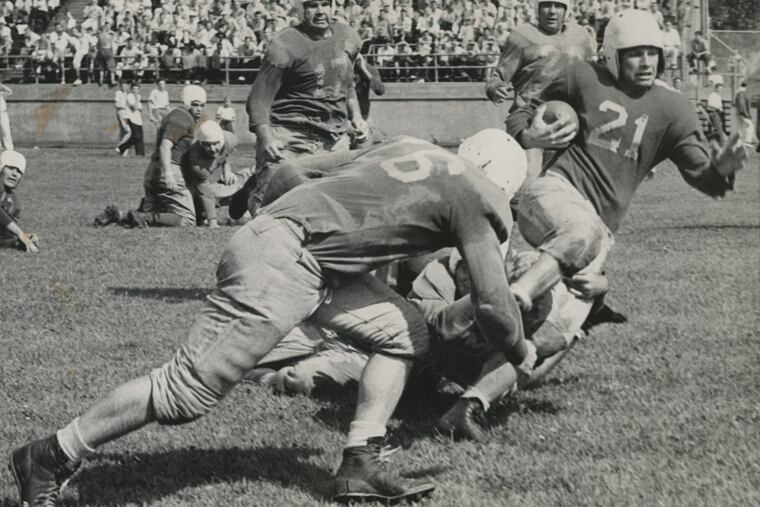How the Philadelphia Yellow Jackets became the Philadelphia Eagles | Philly History
Before professional football arrived in Philly, a recreational outfit founded in 1899 known as the Yellow Jackets operated out of the city's Frankford neighborhood.

Super Bowl LII marks the Philadelphia Eagles' third appearance in the championship game. Though the Vince Lombardi Trophy has eluded the Eagles since the NFL and AFL merged in the late 1960s, the team won three pre-Super Bowl league titles and carries forward a football tradition that stretches back to the 19th century.
Before professional football arrived in Philly, a recreational outfit founded in 1899 known as the Yellow Jackets operated out of the city's Frankford neighborhood. Despite the team's amateur status, the Yellow Jackets steadily built a reputation as a regional powerhouse.
The club began playing scrimmages against NFL teams in the early 1920s, stunning crowds by handily beating professional opponents. The Yellow Jackets' first-ever matchup against an NFL team resulted in a 20-0 rout of the Rochester Jeffersons. In 1924, the NFL offered the Yellow Jackets a spot in the league, making them the first professional football team in Philadelphia history.
For their first NFL season, the Yellow Jackets went 11-2-1. They won the NFL championship just two years later in 1926. A dominant force to reckon with on the field, the team's players maintained an active presence in the Frankford community. After doling out players' salaries, the Yellow Jackets' management donated additional income to local charities. The Great Depression, however, ushered in an era of financial instability for the Yellow Jackets. Combined with a series of costly stadium fires, the team's financial woes led to its end in 1931.
The NFL awarded the franchise rights forfeited by the Yellow Jackets to Lud Wray and Bert Bell, paving the way for the Philadelphia Eagles' first season in 1933. Wray and Bell borrowed the team's name from the emblem associated with the National Recovery Administration, a key agency behind President Franklin D. Roosevelt's New Deal policies.
Today's league treats the Eagles and the Yellow Jackets as separate franchises, but the two share common threads. The Eagles took on the Yellow Jackets' debt and remaining assets and kept the team's blue and yellow color scheme for several years. Wray was a former Yellow Jacket.
While the Eagles had a rough start — they had to wait until 1943 for their first winning season, and that was as the jointly operated "Steagles" that combined Philly and Pittsburgh for one year during WWII — the team had no shortage of intriguing stories in its early years. In 1938, the Eagles drafted Heisman Trophy winner Davey O'Brien with the fourth overall pick. Despite breaking a record for passing yards in his first season, the quarterback led the Eagles for two disastrous seasons before calling it quits. He moved on to become a field agent for the FBI.
From 1940 to 1941, a peculiar series of deals essentially resulted in the Eagles' swapping rosters with the Pittsburgh Steelers in what has since become known as "Pennsylvania Polka." To make matters more complicated, a mini-draft between the two teams meant that a handful of players stayed in their respective cities. Since the NFL awarded franchises based on location at the time, the league does not consider this bizarre managerial dance an interruption of each team's consistent history of operation.
Among the most remarkable stories from the Eagles' first decades is that of Lt. Jack Sanders, a WWII veteran who lost his left hand and wrist during the Battle of Iwo Jima. Having played for the Steelers before fighting in the Pacific, Sanders resolved to hit the field once more after V-day. The Eagles signed him in 1945. An article from the Inquirer describes the crowd's reaction when Sanders emerged for a charity game for injured servicemen:
"The thunderous crescendo rolled from one side of Municipal Stadium and back again as Lieutenant Jack Sanders of the Marine Corps ran onto the field to take his place in the Eagles' starting lineup. … Every eye was focused on the courageous athlete."
He went on to play three regular-season games in 1945.
Patrick Glennon is a communications officer at the Historical Society of Pennsylvania. pglennon@hsp.org